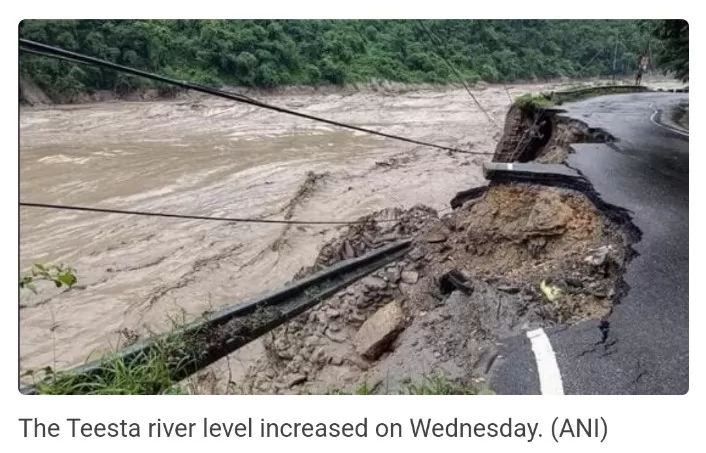Sikkim, India – In a catastrophic event that unfolded in the dead of night, Teesta Urja, a colossal 1,200 MW hydroelectric power project nestled on the Teesta River, suffered extensive devastation due to a colossal flood triggered by the breach of the Lhonak Lake in northwest Sikkim. This untimely disaster has cast a shadow over one of the nation’s largest run-of-the-river hydropower endeavors.
The Teesta Urja project, strategically positioned between Chungthang and Mangan in the Mangan district of North Sikkim, represents the most significant among nine operational hydro projects on the Teesta River in Sikkim. The region also witnesses ongoing construction on 15 additional dams, with proposals for an additional 28, all poised to harness the river’s formidable hydel capacity of approximately 4,200 MW.
Sunil Saraogi, the distinguished Executive Chairman of Sikkim Urja Limited, formerly known as Teesta Urja Limited, lamented the sheer force of nature that manifested when the Chungthang dam succumbed to the relentless surge of water in a mere ten minutes. In a recount of the harrowing ordeal, he detailed how the ITBP (Indian Tibet Border Police) sounded the alarm at 11:58 PM on Tuesday night. The valiant response team promptly moved to open the dam gates, but the deluge struck before they could complete the task. With immense bravery, the team of 12 to 13 individuals managed to reach safety on the opposite side of the dam and were subsequently evacuated by the ITBP by 2 PM on Wednesday.
Adding to the catastrophe, the 200-meter-long bridge linking the powerhouse to the dam was also obliterated by the deluge. Saraogi voiced the inestimable damage incurred, emphasizing that the colossal endeavor of reconstructing the project is poised to involve investments amounting to thousands of crores of rupees.
Visual evidence from the site underscores the gravity of the situation, revealing substantial sections of the dam’s structure missing, leaving an indelible mark on the landscape.
According to the Sikkim disaster management authority, the rupture of the Chungthang dam precipitated an abrupt surge of 15-20 feet in the water levels downstream, compounding the devastation.
The Teesta Urja project, inaugurated in February 2017, only began to reap profits in 2022, demonstrating its operational prowess by generating surplus power beyond its stipulated capacity, largely attributed to a bountiful water flow. It is noteworthy that the Sikkim government holds a substantial 60.08% stake in this monumental project.
Notably, local activists have long cautioned against the adverse ecological repercussions of run-of-the-river projects along the 414 km Teesta River, which originates from the lofty Punhunri Mountain in northern Sikkim.
Run-of-the-river projects, which redirect river flow through canals or penstocks to activate turbines for electricity generation, have generally foregone extensive irrigation provisions, accentuating their environmental impact. The consequences of this disaster echo far beyond infrastructure, compelling a contemplation of the intricate balance between harnessing nature’s power and safeguarding her relentless might.







